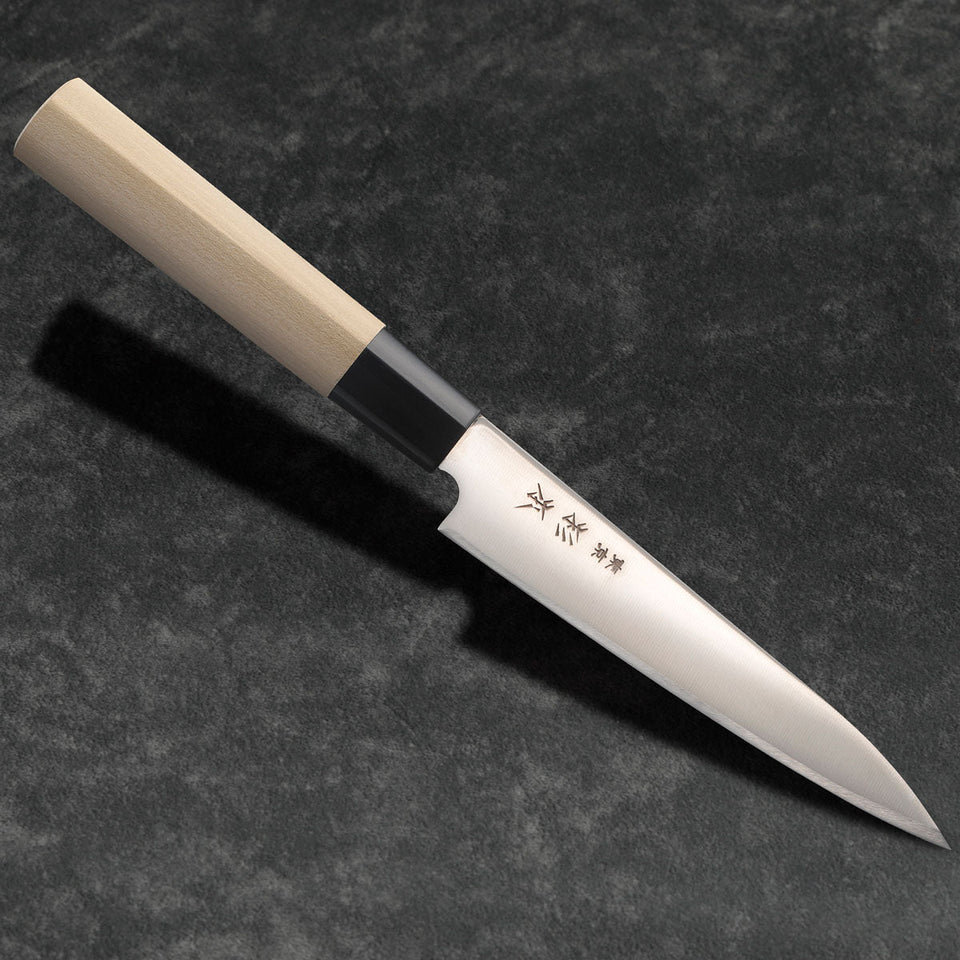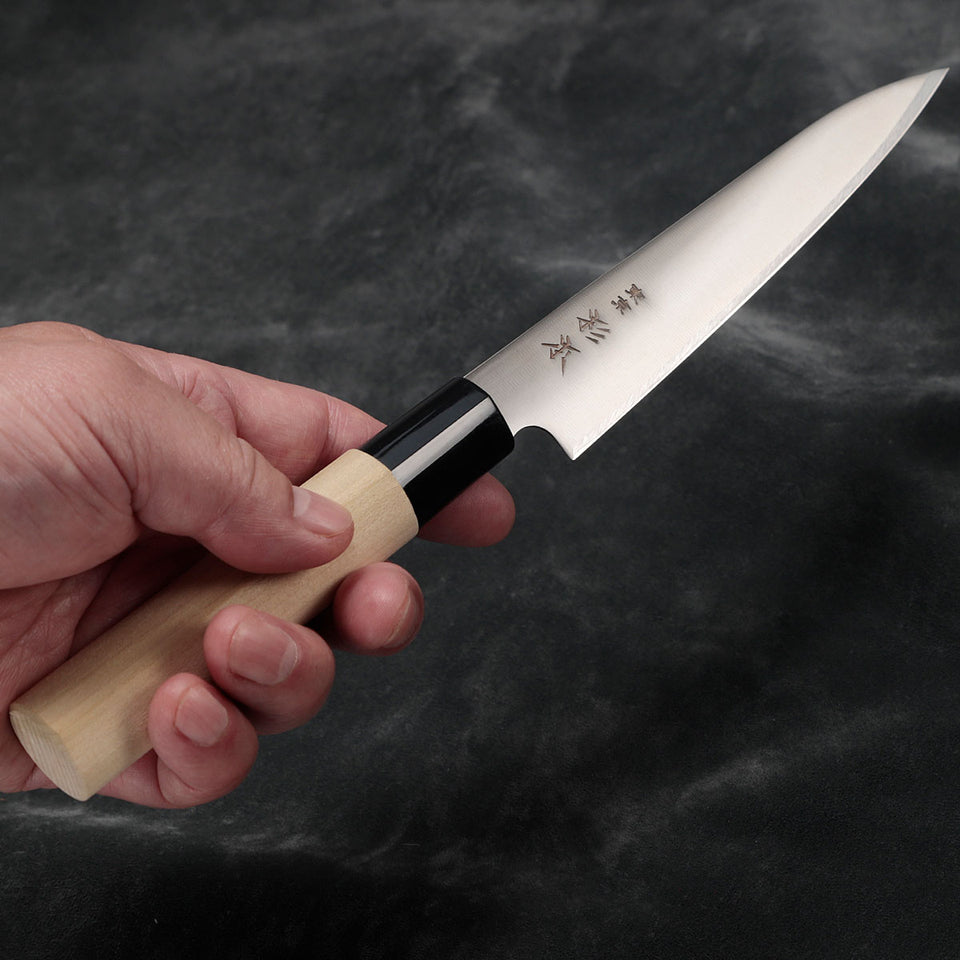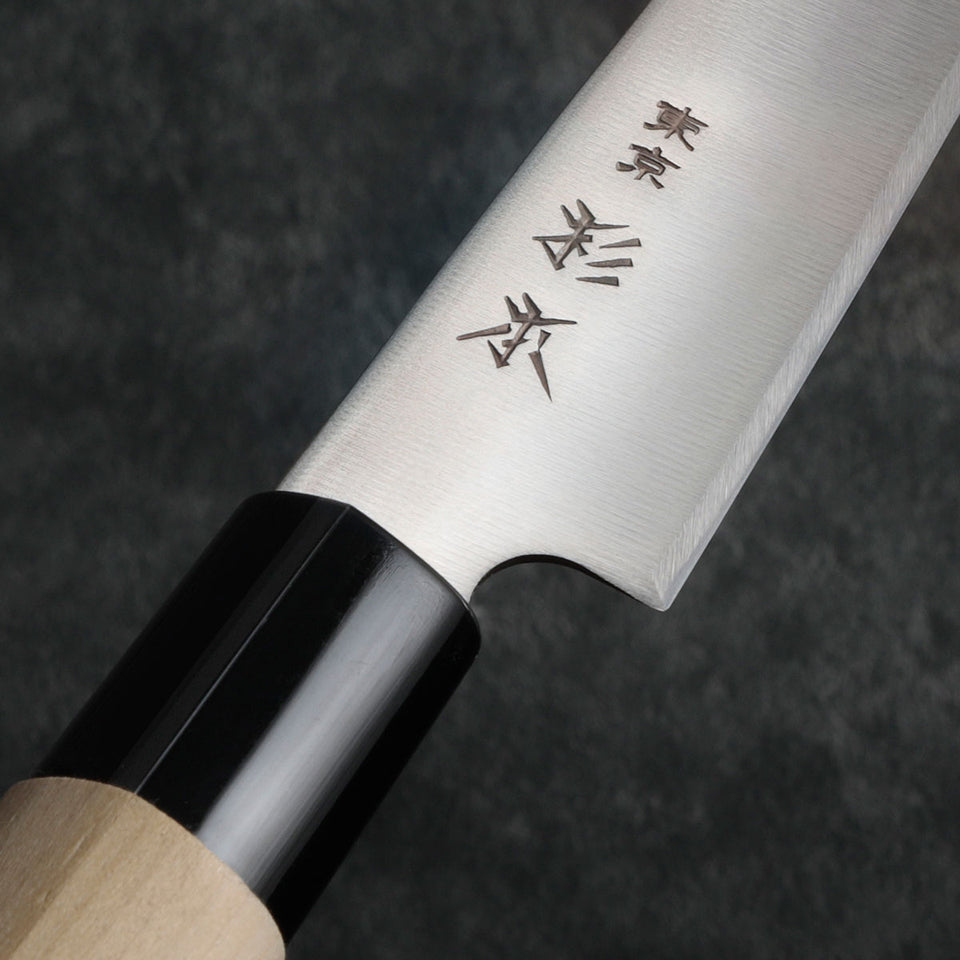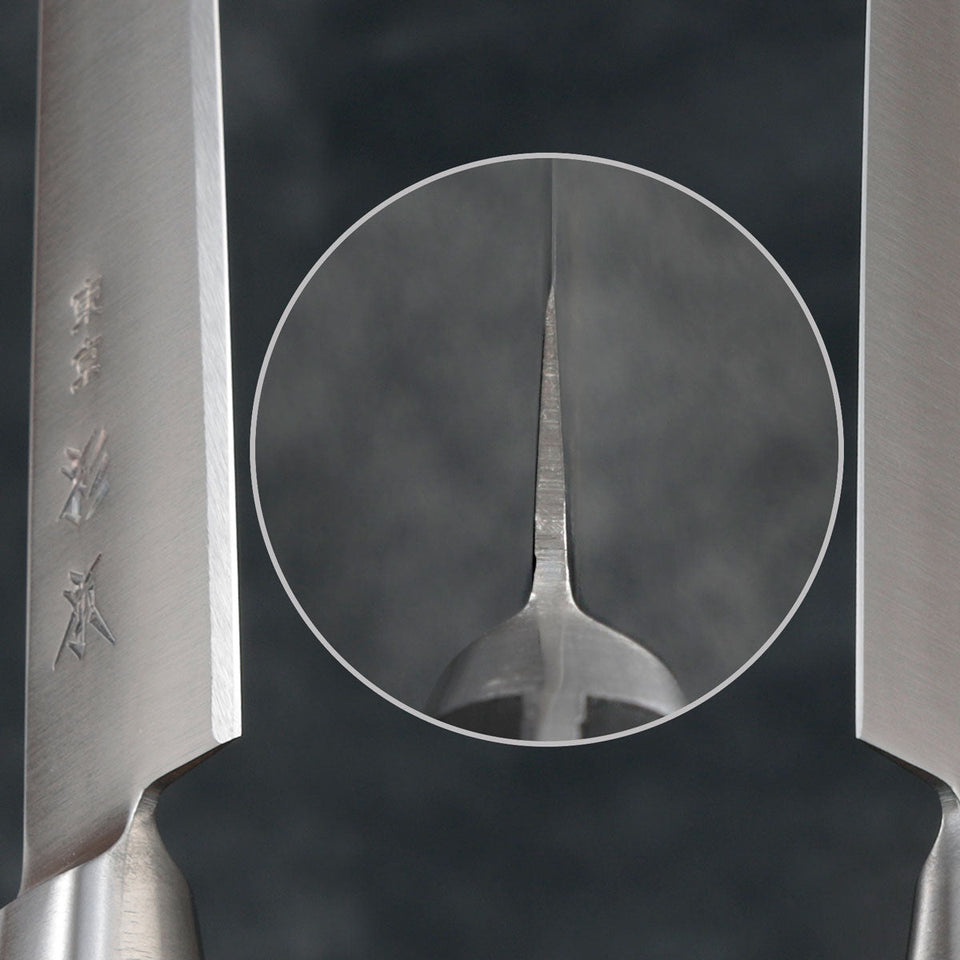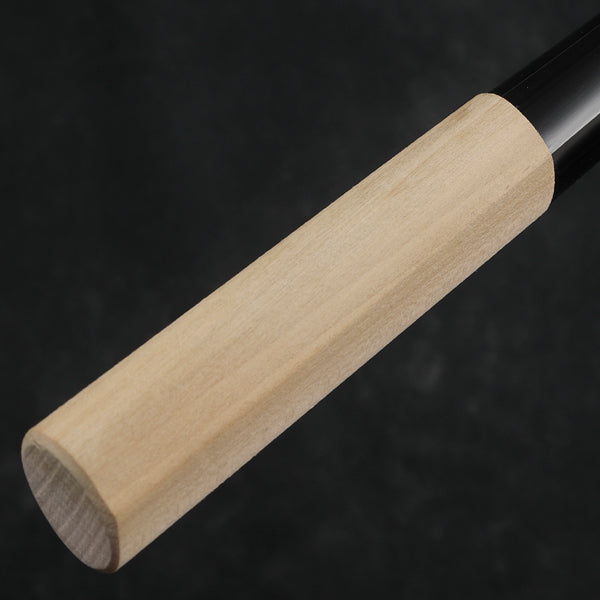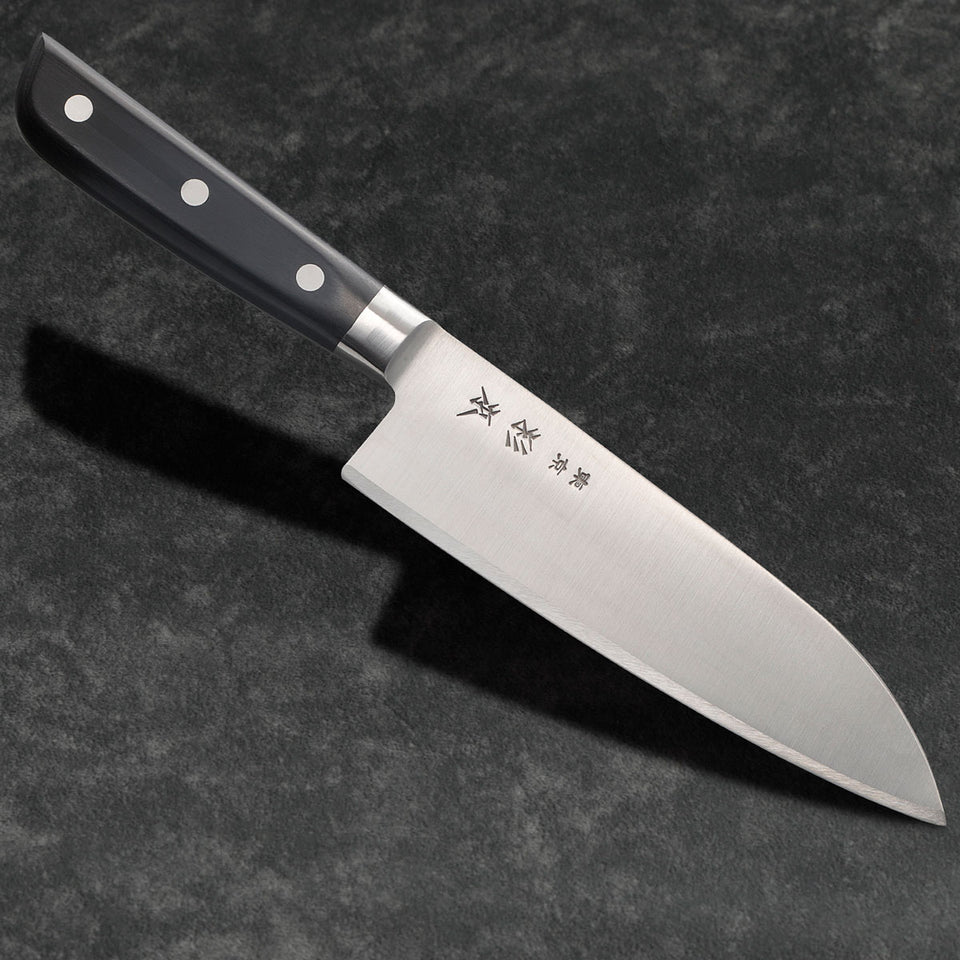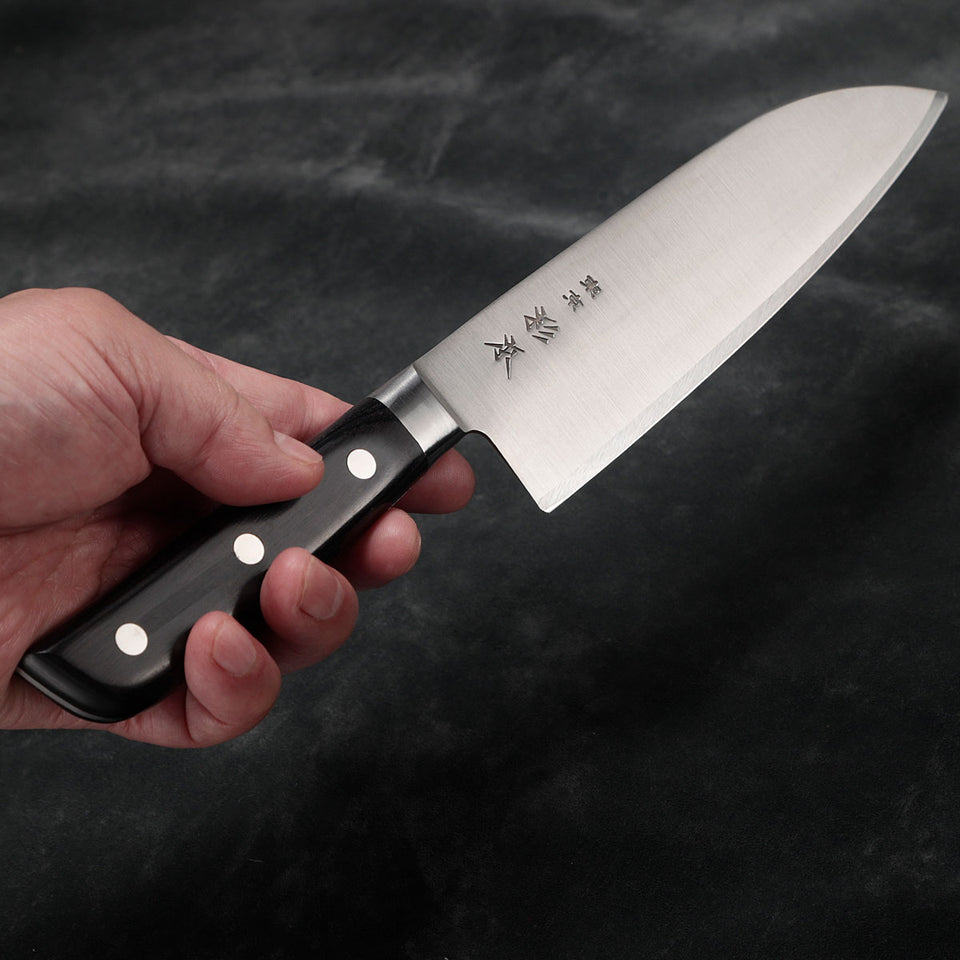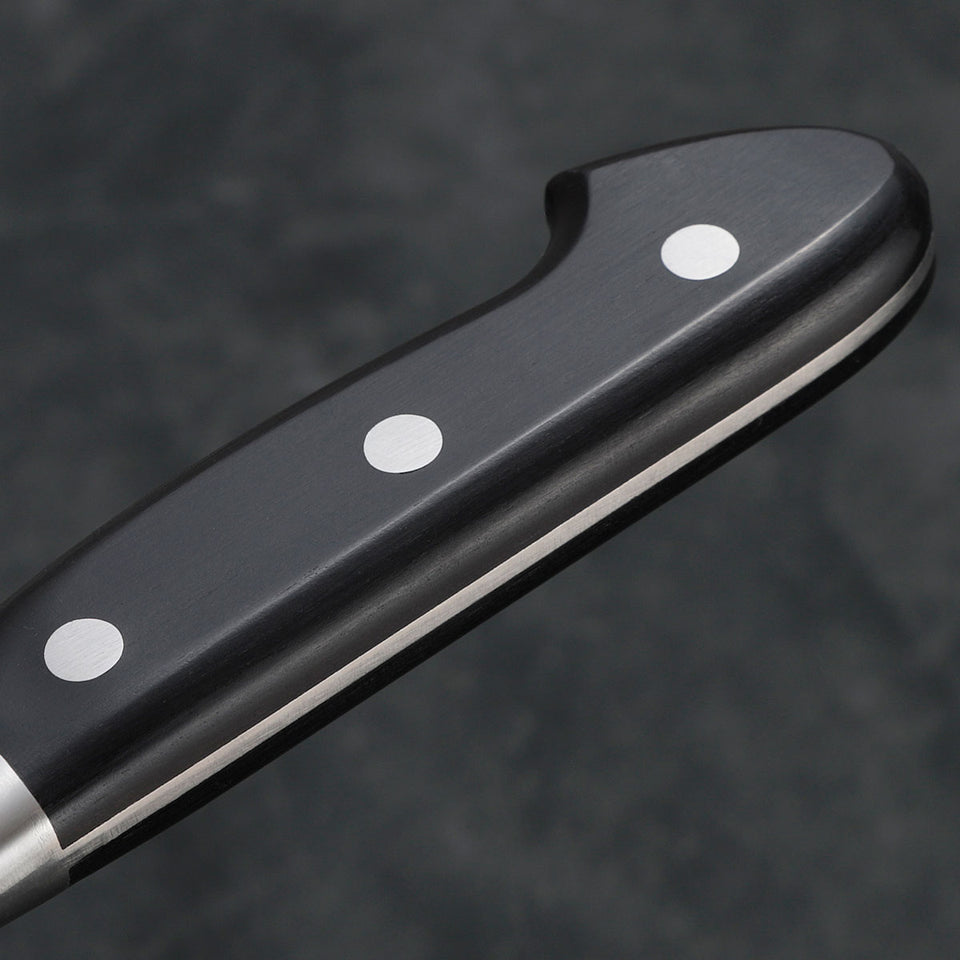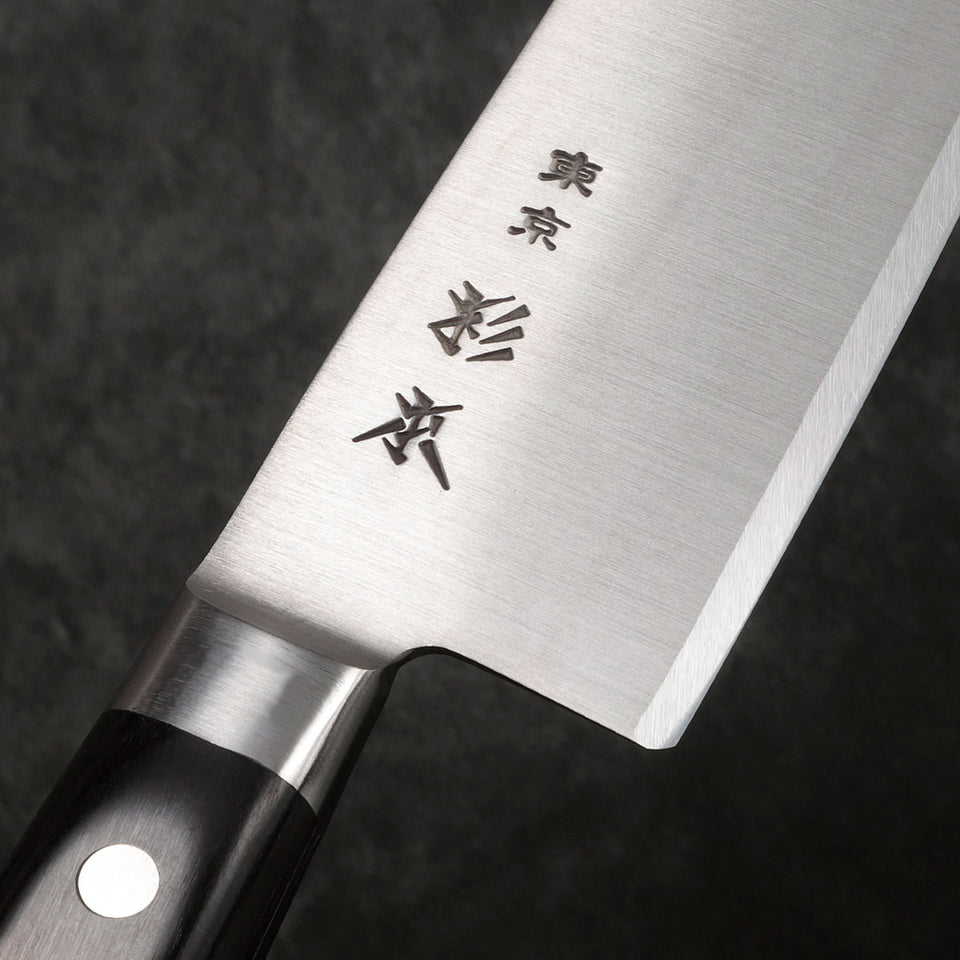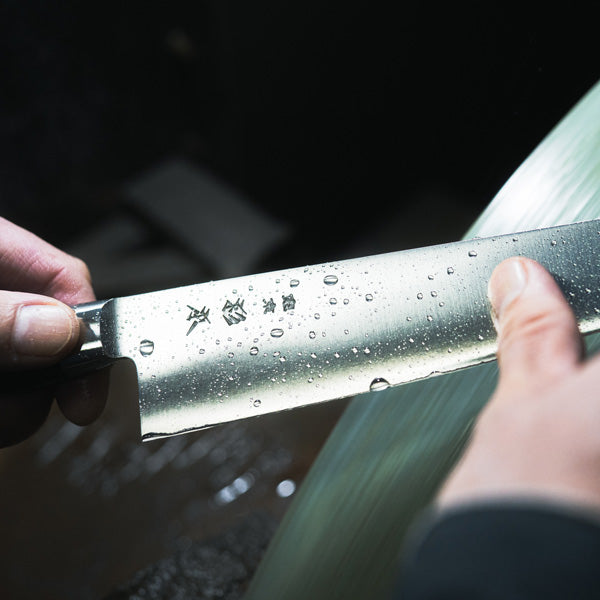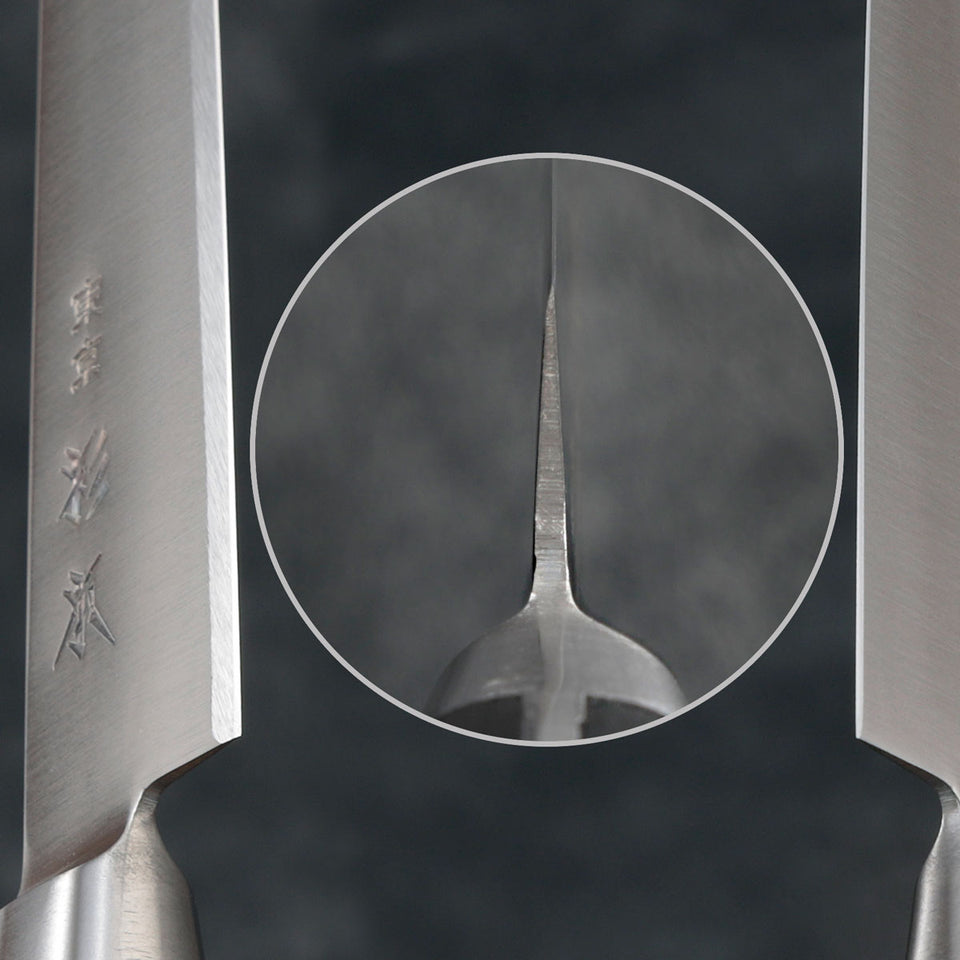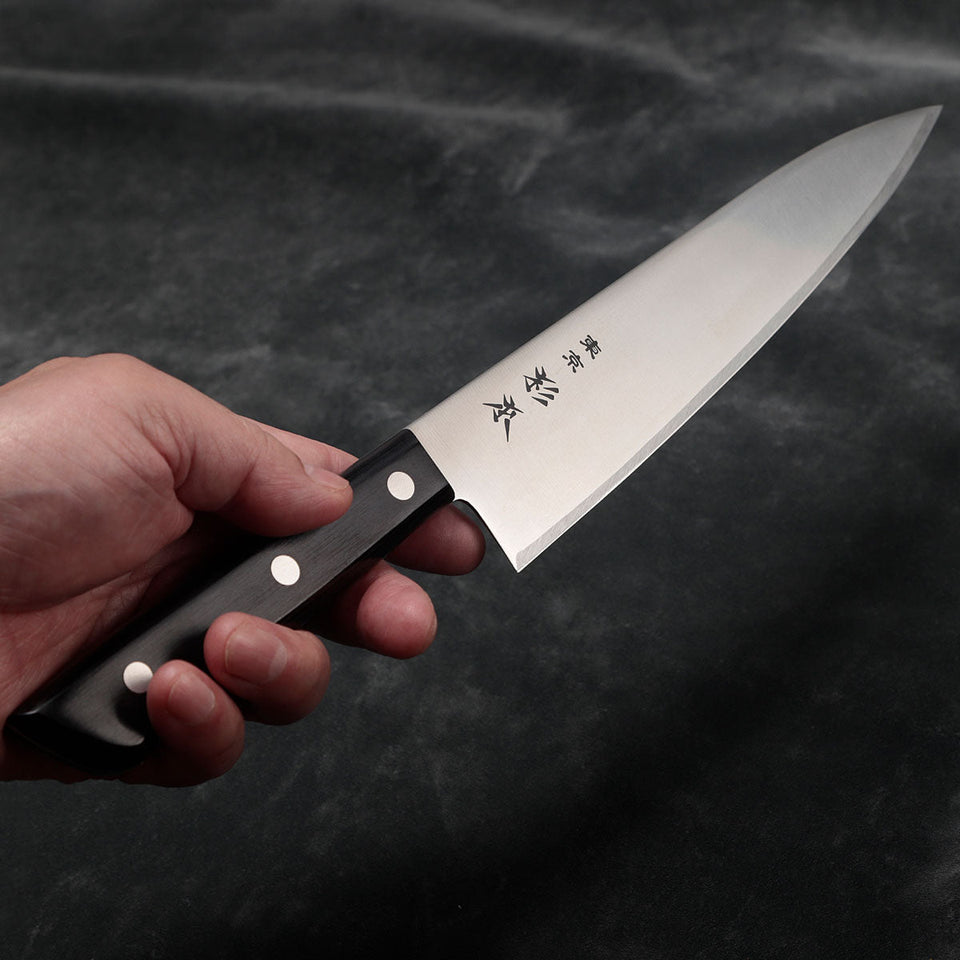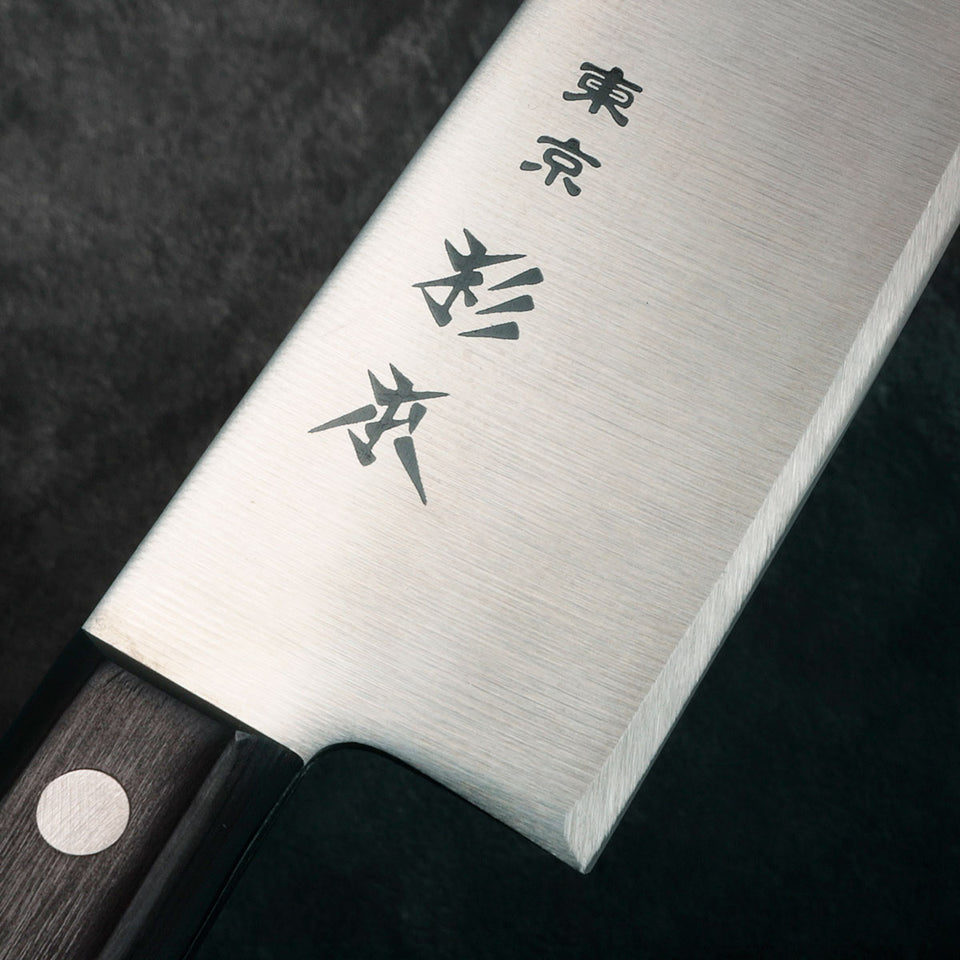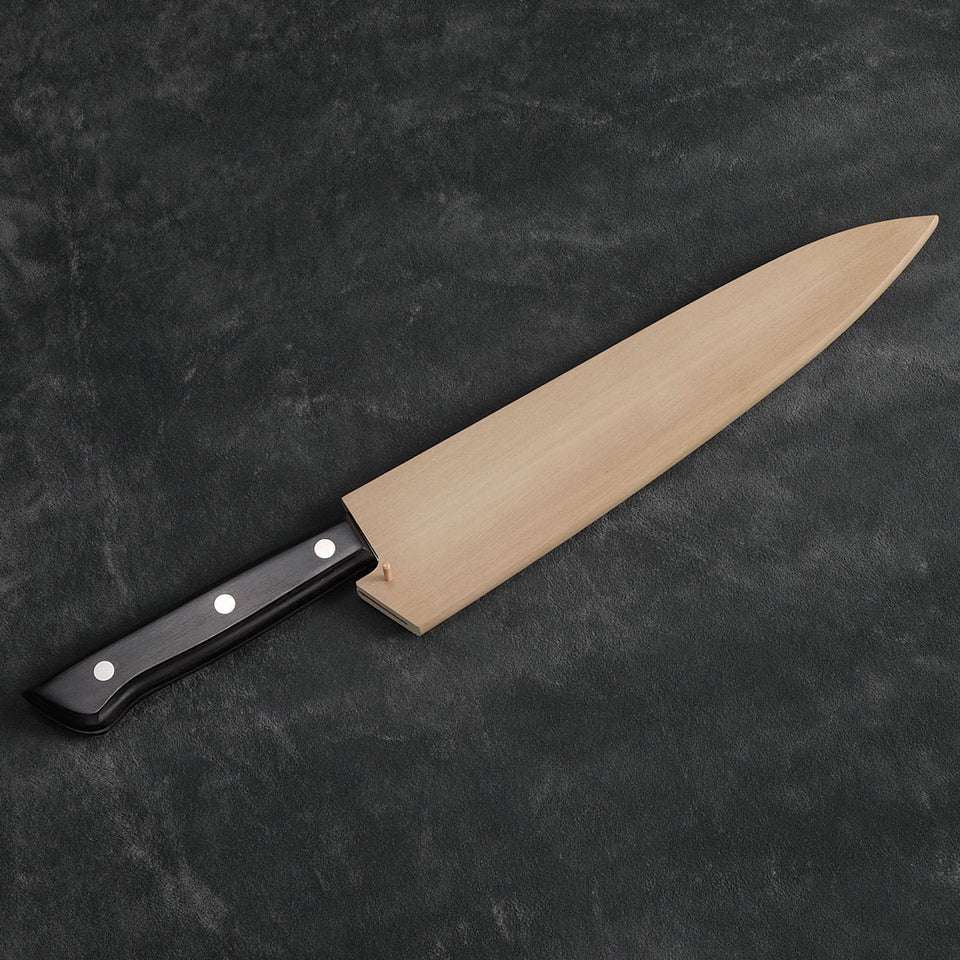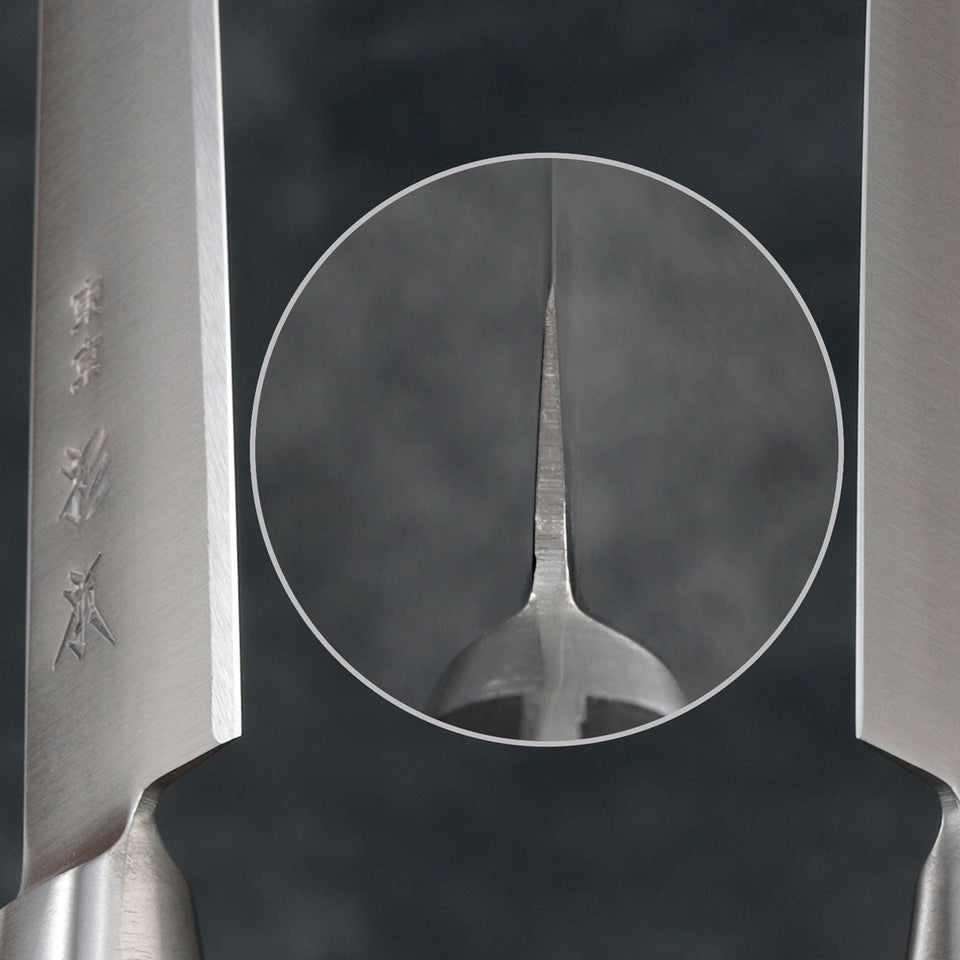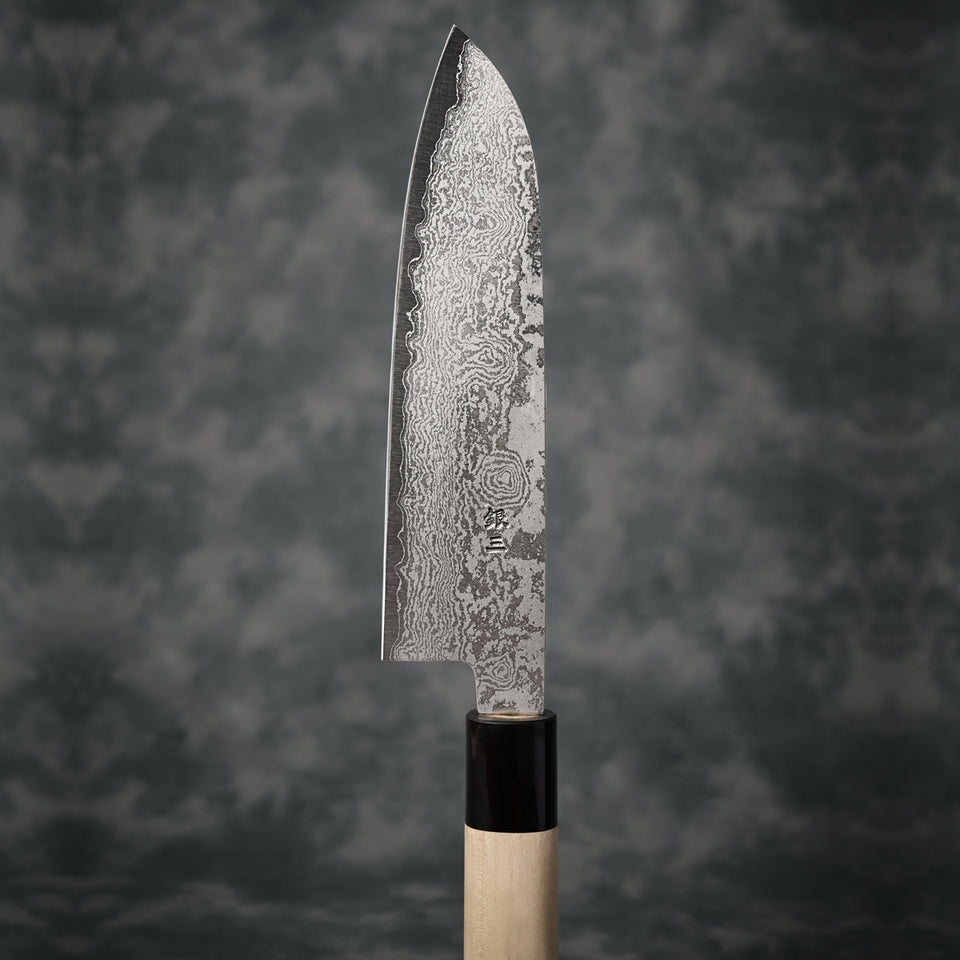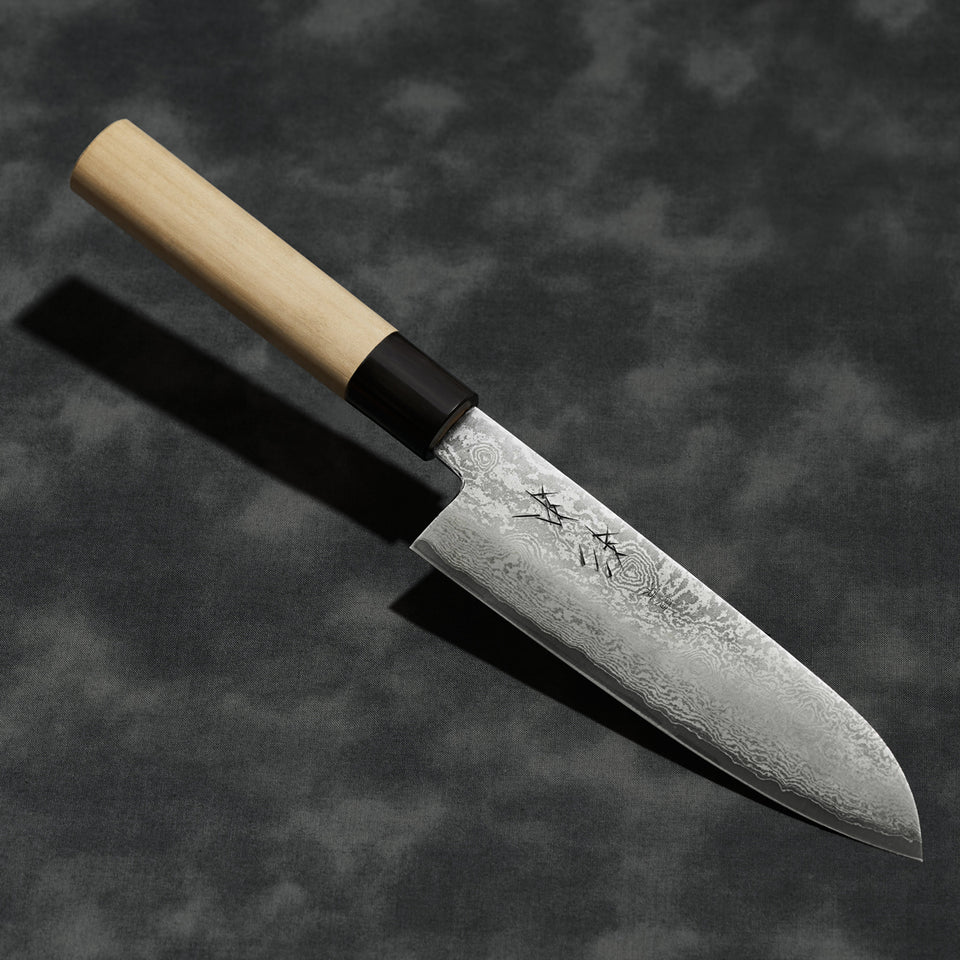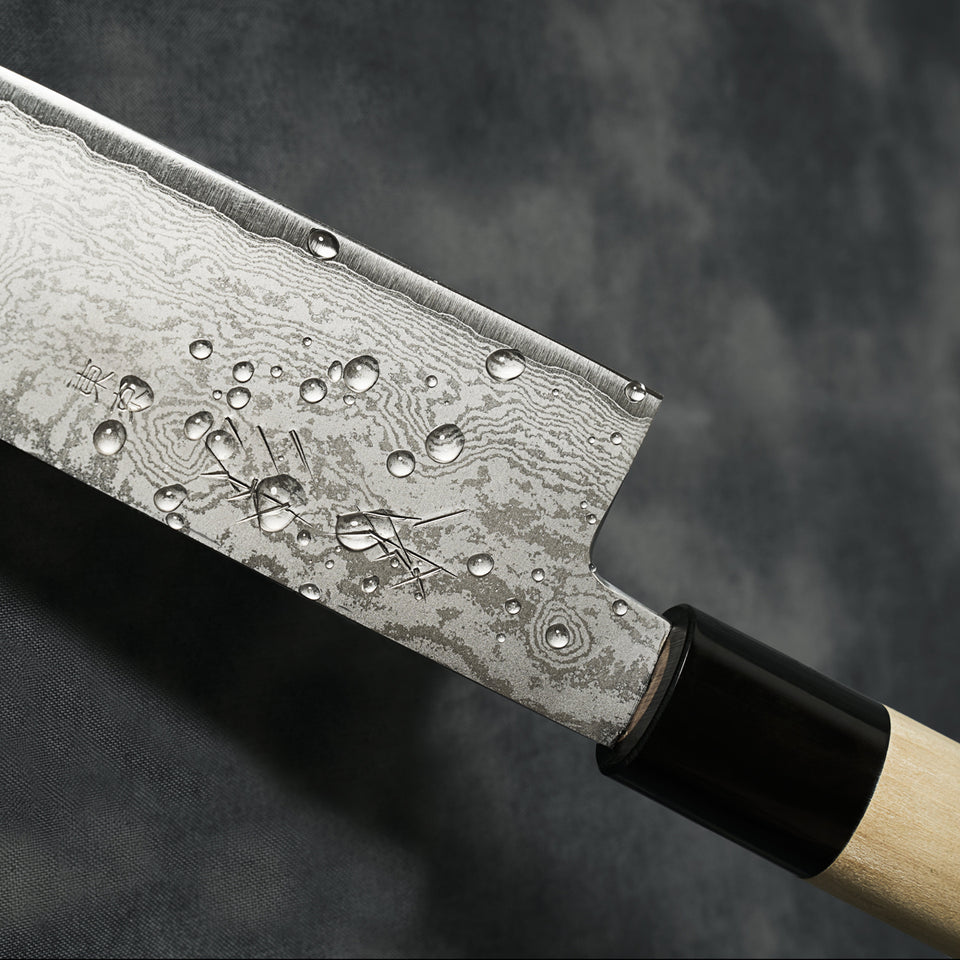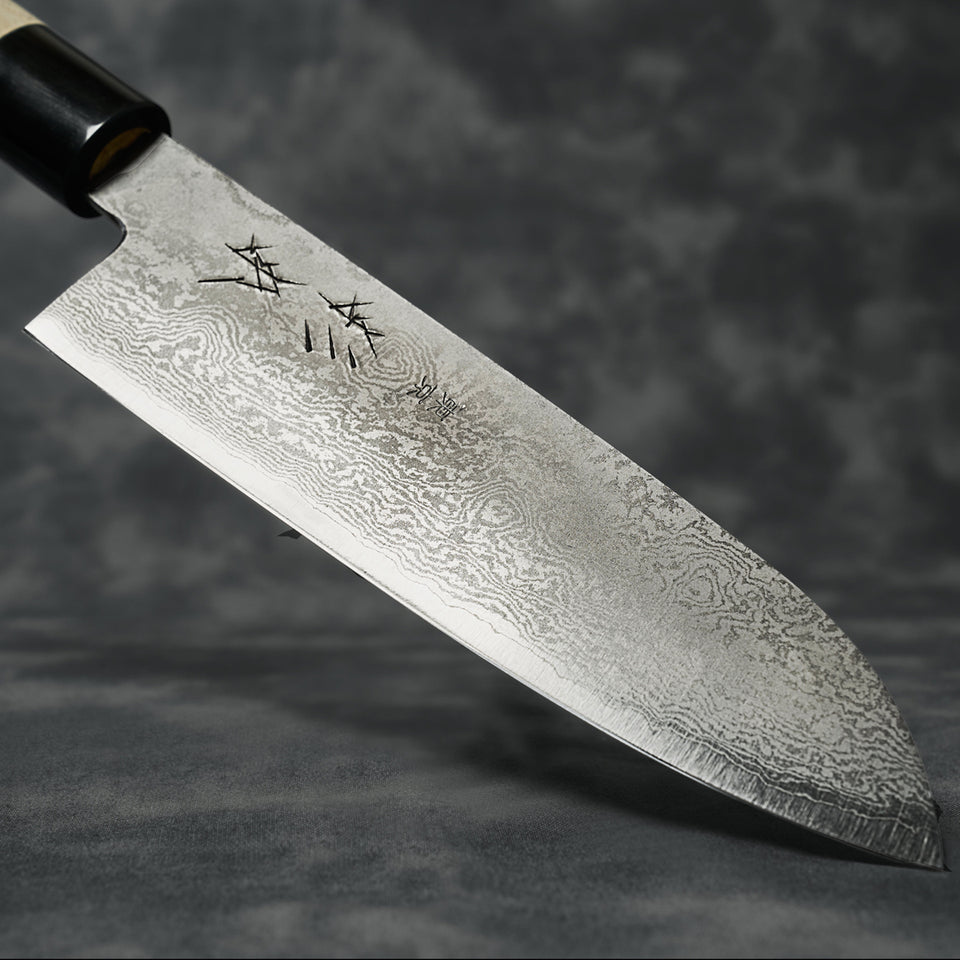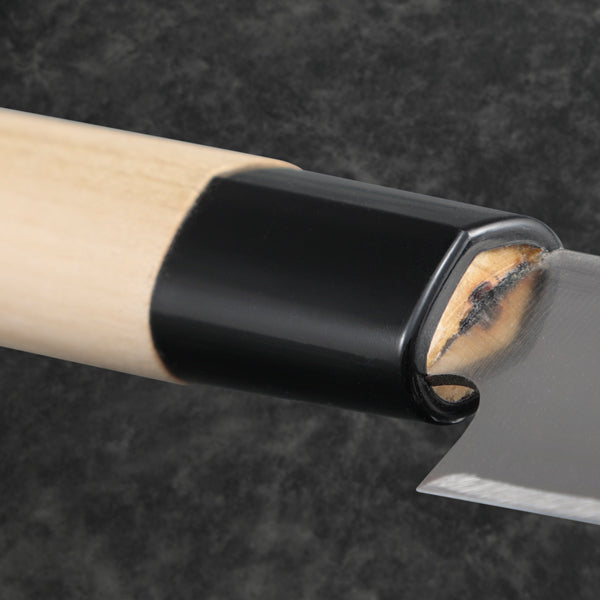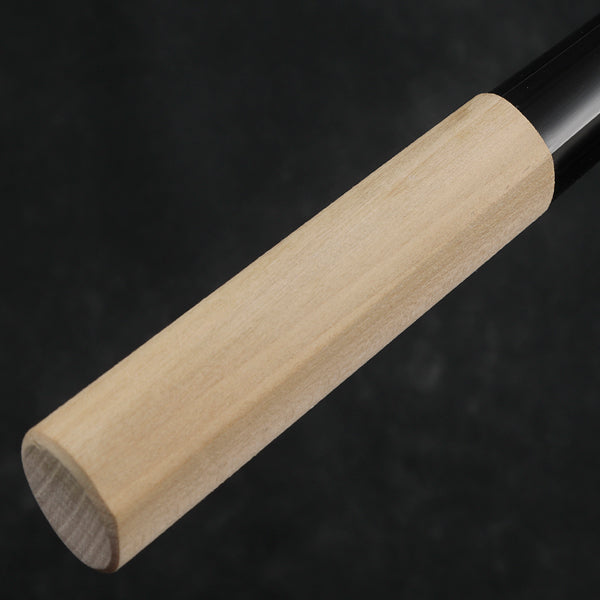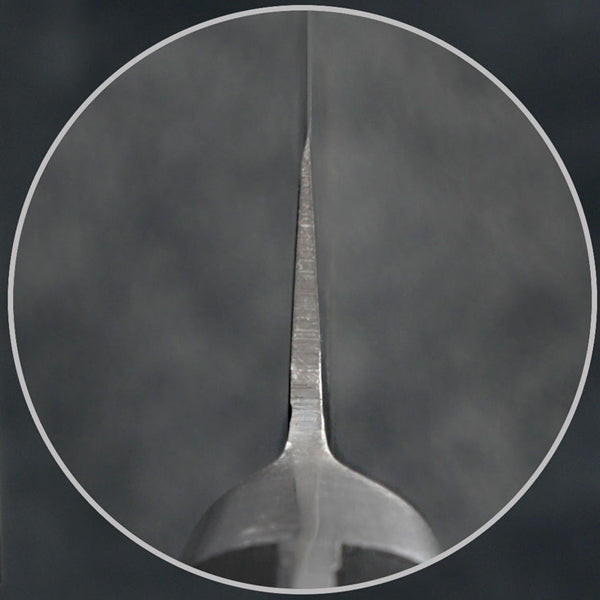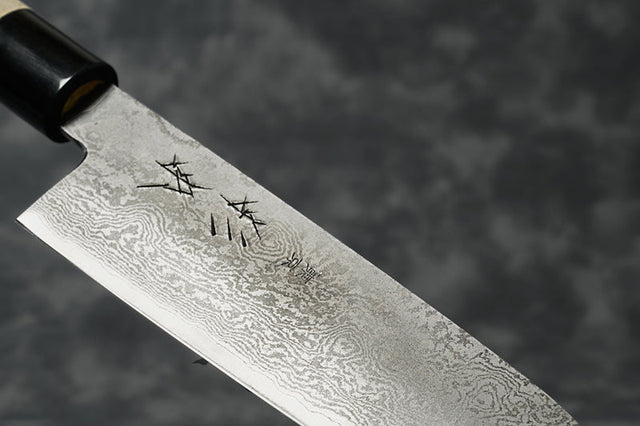With a dozen or more common knife designs and an equally diverse number of steels and handles, Japanese knives offer a tremendous amount of choice. As a result, it can be daunting to decide which is right for you. But, many of these knives are specific to a single job, and the average home cook (and even most professional chefs) won't need them. That's why we offer only the core knives that are the most useful.
A Simple Guide to Choosing Your Knife
Here, I will guide you through our selection of knives: the Gyuto, Santoku, Bunka, Petty, Deba, Nakiri, and Yanagiba. However, rather than just explaining what each of them does, I will categorize them by the tasks they are best at. That way, you can decide which one is best for you based on what kitchen tasks you want your knife to be able to do. I'll also offer some ideas on different ways to choose a set of knives that work well together.
All-Purpose Knives for General Use
It all starts here. Everyone is going to need one of these knives. The below types are ideal if you don't have a kitchen knife or are looking for an upgrade from your usual primary knife.
Types: Gyuto, Bunka, Santoku, Petty
All-Purpose knives are for just what the name suggests: anything on the chopping board. You can use the Gyuto, Bunka, and Santoku for cutting up meat, fish, or vegetables. They can both rock-slice and push-cut (although the Gyuto and Bunka are better at the former and the Santoku at the latter). They typically sit within a size range of 180mm - 240mm (7.1 - 9.4 inches). Most people will have one of these knives in their kitchen for everyday use; they're the go-to trusty kitchen knife that you always have handy. So if you need a knife that you can rely on for almost everything, this is the perfect place to start.
The Petty Knife as an All-Purpose Knife
One knife that isn't strictly an all-purpose knife but can function the same is the Petty knife. A Petty knife can be an all-purpose knife for people with smaller hands. If this is you, get a Petty knife at 150mm (5.9 inches). It'll be much more maneuverable than a knife that's too long for you. You can see my article here if you want to read more about knife sizes.

Meat and Fish Knives
For carnivores, you will want something that beautifully cuts meat rather than hacks it to pieces. You can preserve and appreciate the texture of beef, poultry, and fish with the knives below.
Types: Deba, Yanagiba, Gyuto, Bunka
Meat Specialists
If you're a big meat eater, you'll want to look at one of these four knives. The Gyuto and Bunka are great at cutting up chunks of meat, trimming the gristle off steaks, and skinning fish. Their length and thinness allow for beautifully cut pieces of meat without creating frayed edges. To top it off, they're both multi-purpose too. So, you can cut up meat without losing the ability to chop vegetables.
Fish Specialists
And if you like fishing or making your own sushi and sashimi at home, consider getting a Deba or Yanagiba.
A Deba can fillet fish far more elegantly than any other knife - it can easily cut through soft bones in a fish and is great for cutting up and deboning raw poultry. The Yanagiba is made for cutting thin, perfect slices of raw fish for sushi or sashimi. Together, they make the ideal team.

Vegetable Knives
Vegetable cutting is the bulk of cooking preparation. So, why not make your life easier with a dedicated vegetable knife? You can save a tremendous amount of time with one of these knives.
Types: Nakiri, Santoku, Petty
Nakiri
The Nakiri is a dedicated vegetable knife for push-cutting. Its wide blade is great for scooping chopped vegetables to throw them in the pan. It also has a very even and primarily flat cutting edge that makes it perfect for cutting vegetables into long strips, something that curved knives struggle to achieve.
Santoku
The Santoku can cut meat and vegetables, but it shares a wide blade for scooping and scraping in common with the Nakiri. So, if you need something that's still all-purpose but want to focus on vegetables, then this is an excellent alternative to the Nakiri.
Petty
The Petty knife is fantastic for peeling a variety of vegetables. Use it for any off-the-board vegetable cutting and shaping that you need to do. And it's also perfect for when you need extra-fine chopping done, like dicing up garlic. For these uses, get a Petty knife in the smallest size (120 mm or 4.7 inches).
Choosing Knife Sets
If you regularly cook at home, creating a set of knives for yourself is a good idea. It'll ensure you have a diverse group of knives to call on when you need them. Below are some ideas of how you could group knives depending on your diet and cooking habits. Of course, these are only suggestions, as you may have other ideas in mind about the collection of knives you'd like to have in your kitchen, but hopefully, they offer some guidance.

A Basic Starter Set
Contains: Gyuto, or Bunka, or Santoku and Petty
A Gyuto, Bunka, or Santoku as your primary knife paired with a Petty knife will be suitable for most tasks. You can use your primary all-purpose knife to get most things done, and whenever you need fine knife work or extra maneuverability, you can call on your Petty. You can add other specialist knives to your set if you need them. For example, if you frequently fillet fish or cut up a lot of whole animals, such as chickens, consider adding a Deba.
A Basic Vegetarian Set
Contains: Nakiri and Petty
If you only ever eat a vegetarian or vegan diet, these two knives will have you covered. Generally, you will be able to use the Nakiri for everything but when you need a knife with a pointed tip you can get out your Petty. Consider getting a larger petty at 150mm (5.9 inches).
A Traditional Japanese Set
Contains: Deba, Nakiri, and Yanagiba
For over a century, the standard knives for every Japanese home kitchen were a Deba, Nakiri, and Yanagiba. You can use the Deba for filleting whole fish, the Yanagiba for slicing thin pieces off the fillets, and the Nakiri for accompanying vegetables. With this set, you can advance your Japanese cookery skills and eat incredibly healthily. Make your own authentic sushi, sashimi, and classic toppings for ramen.
A Full Set
Contains: Gyuto, or Bunka, or Santoku; Nakiri, Deba, Yanagiba, and Petty
And you could get yourself a complete set to cover all the bases. Choose the primary knife you prefer (I have a more in-depth article on their differences here) and get the rest of the specialist knives to go along with it. For experienced cooks, or people looking to get serious about cooking, every one of these knives will be helpful at some point. In fact, for elaborate dishes or large feasts, you may find yourself utilizing all of them.
Get Free Bonus Books
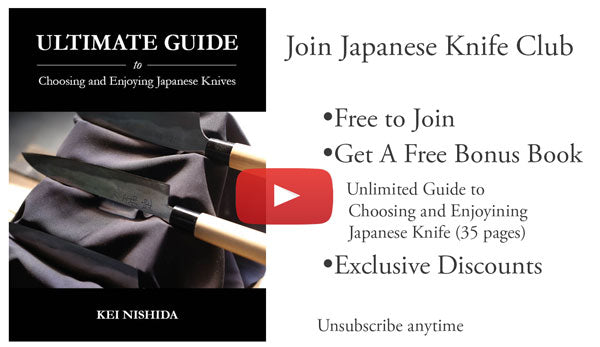
Sign up for free to the Japanese Knife Club to get advice and exclusive articles about how to choose Japanese Knives, and tips and tricks for using Japanese knives.
About the author
Kei Nishida
Author, CEO Dream of Japan
Certification: PMP, BS in Computer Science
Education: Western Washington University
Kei Nishida is a passionate advocate of Japanese craftsmanship, a writer, and the founder and CEO of Japanese Knife Co., Japanese Green Tea Co., and Japanese Coffee Co., all part of Dream of Japan.
His journey began with a mission to introduce the world to the exquisite flavors of Japanese green tea. Through Japanese Green Tea Co., he pioneered the import of premium tea grown in nutrient-rich sugarcane soil, earning multiple Global Tea Champion awards. He then expanded into the world of coffee, launching Japanese Coffee Co., the first company to bring Sumiyaki charcoal-roasted coffee to a global audience.
With a deep appreciation for Japanese artistry and tradition, Kei turned his attention to one of Japan’s most revered crafts: bladesmithing. Through Japanese Knife Co., he made handcrafted katana-style knives, created by a renowned katana maker, available outside Japan for the first time. These exceptional knives embody centuries of samurai sword-making expertise, blending tradition with modern functionality for chefs and collectors alike.
Kei’s journey continues as he uncovers and shares Japan’s hidden treasures—one sip, one blade, and one legacy at a time.

